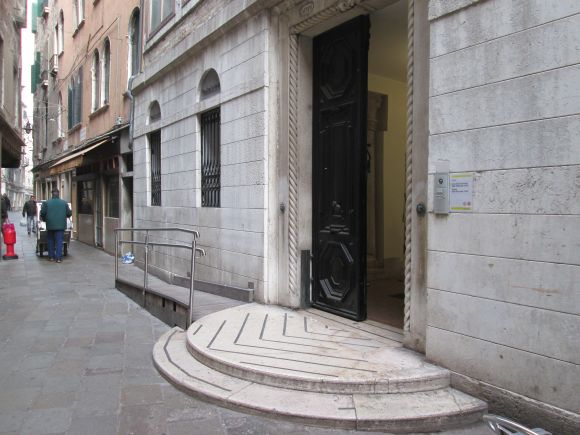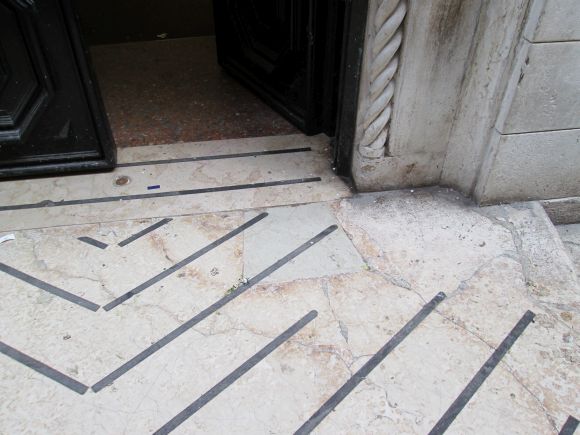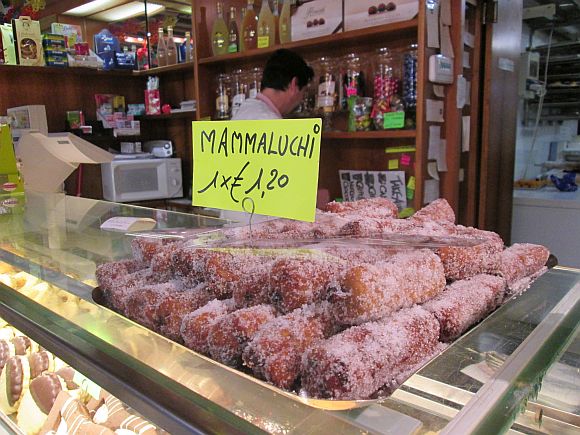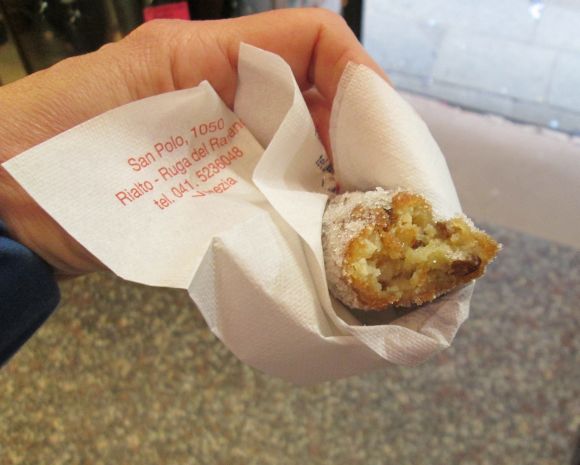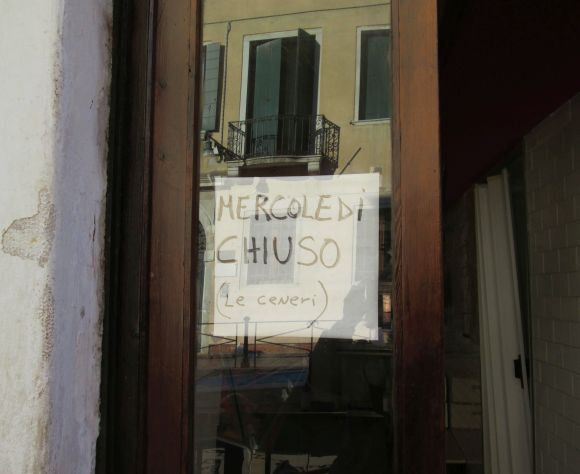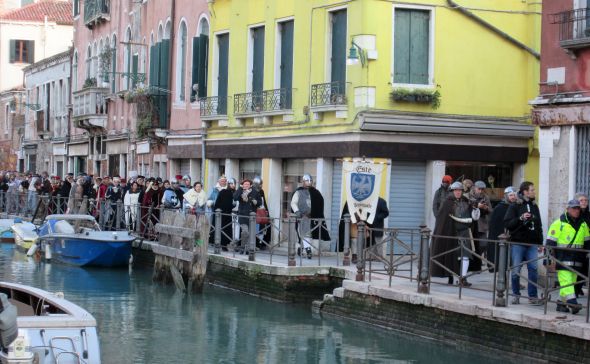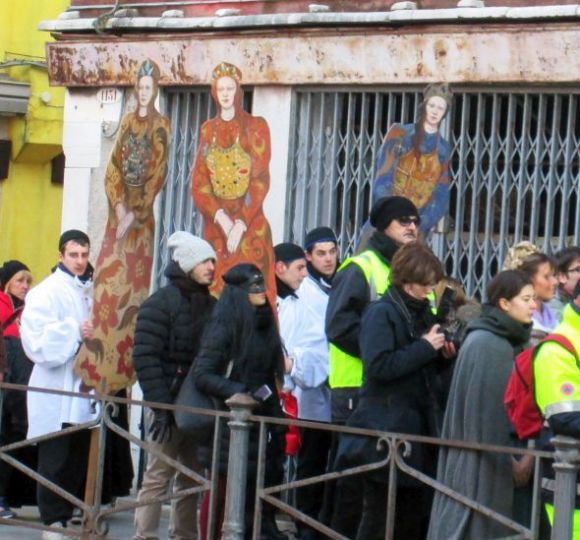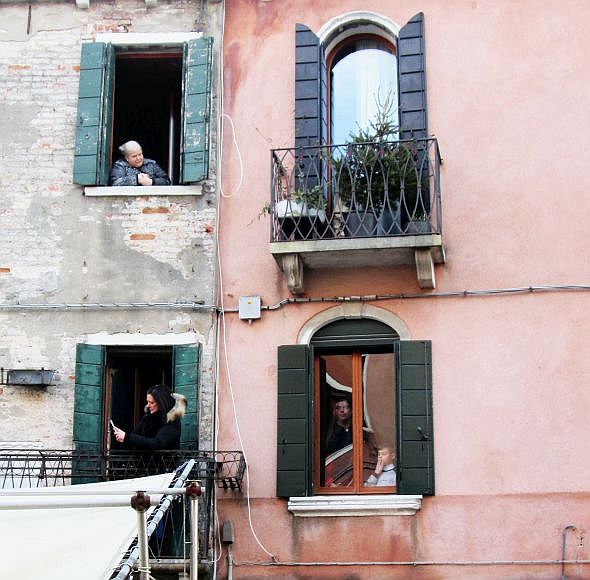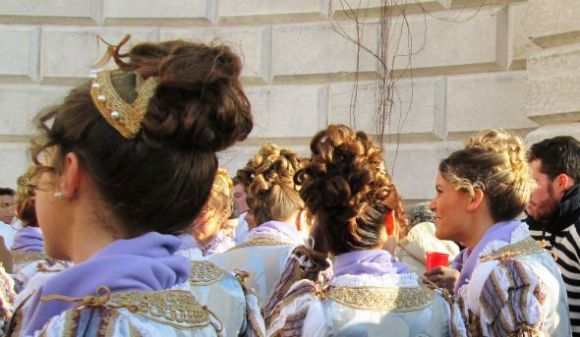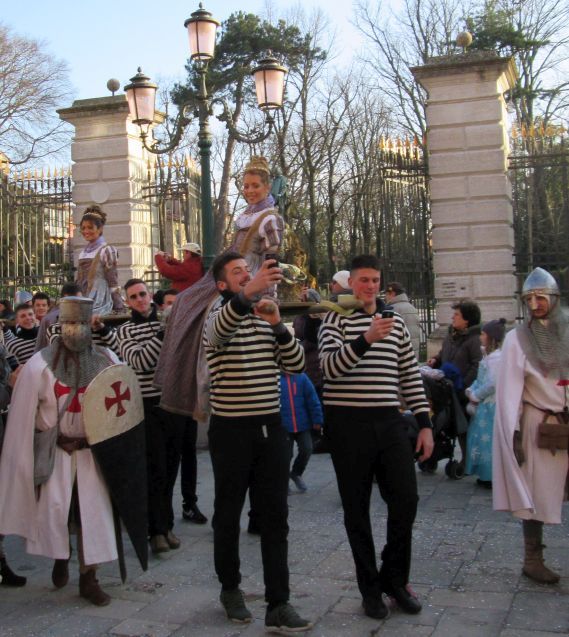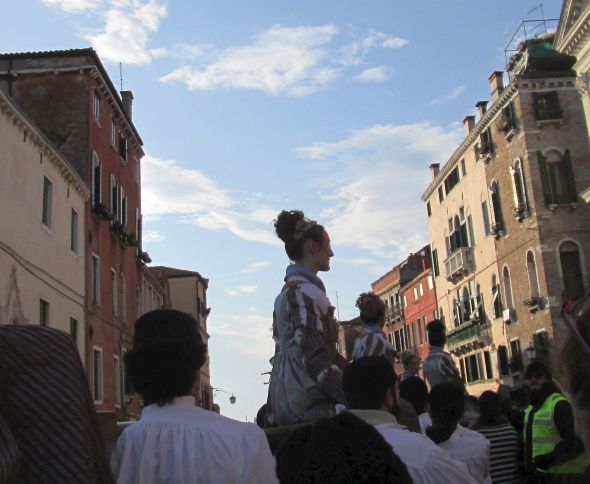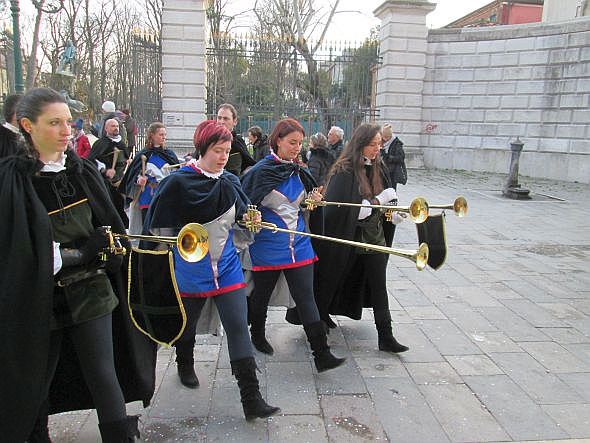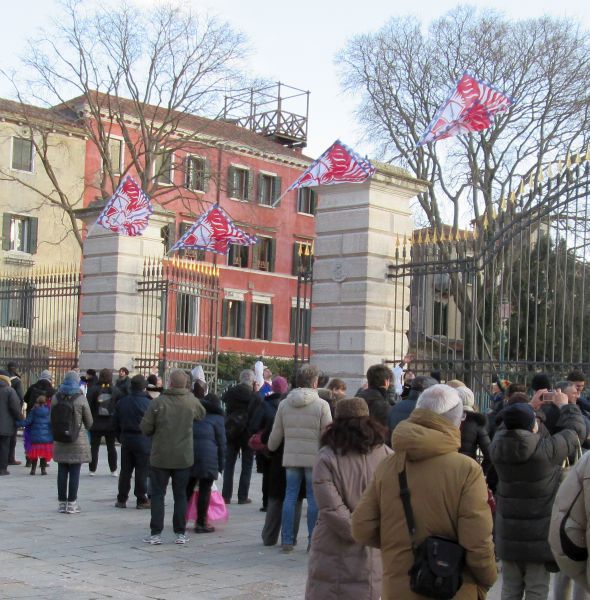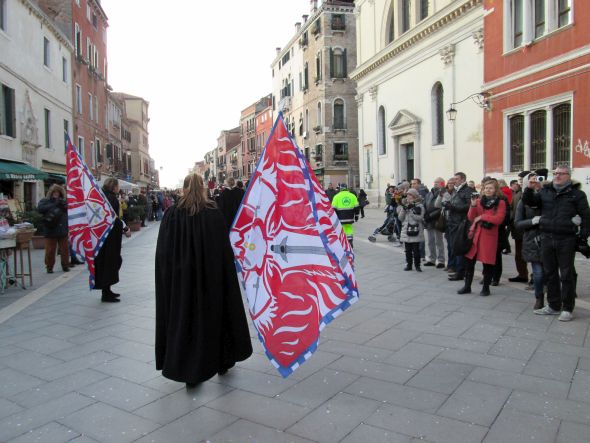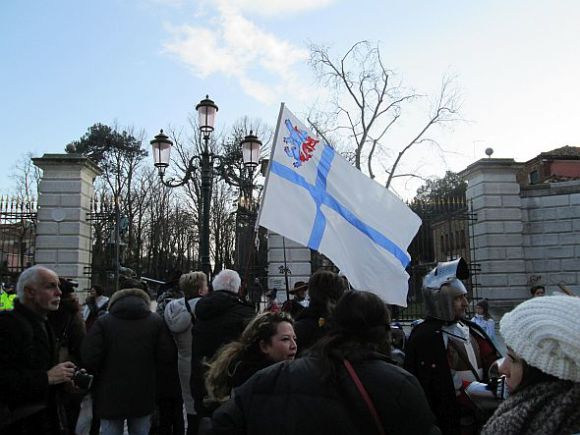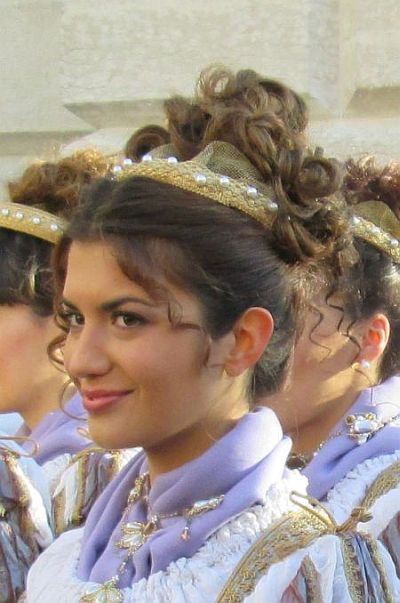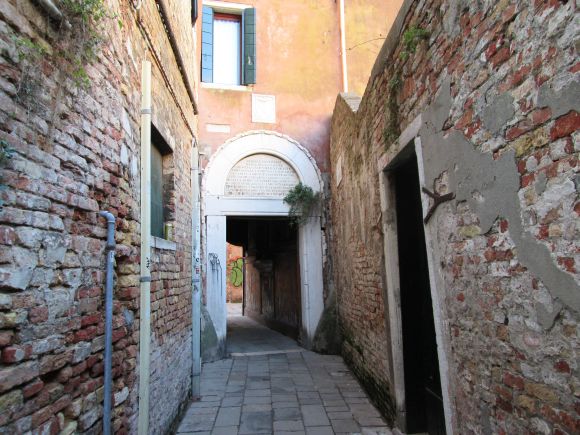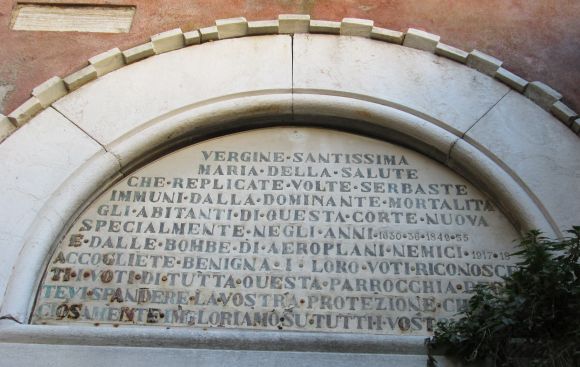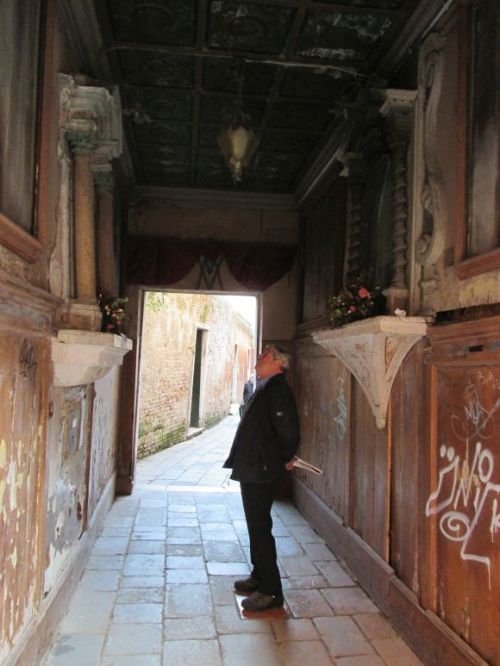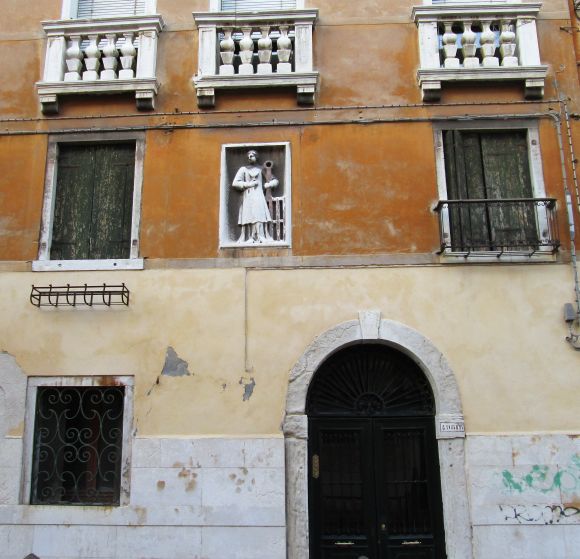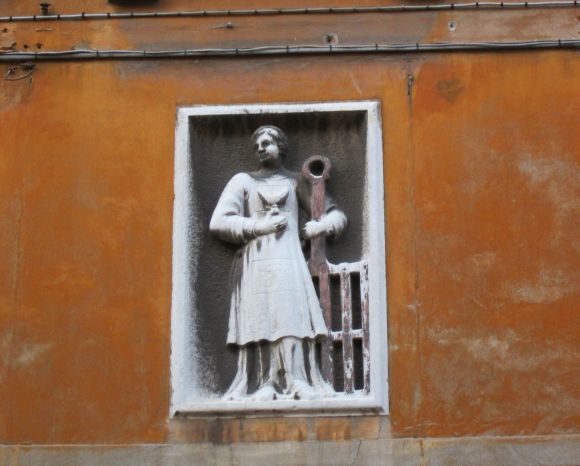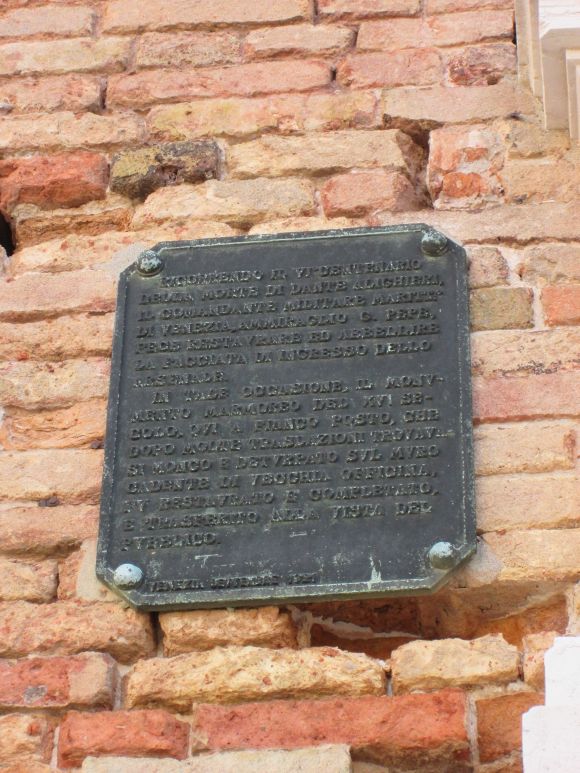
We wandered up to the Rialto market this morning, a first-class walk if you start early. The nearly empty streets and the general air of starting over fresh is always a great thing.
As often happens, we saw some people and some things that brought forth a small spate of reminiscences, inspired first by the extremely ancient man seated in our favorite cafe, alone, silently munching a small sandwich. Whenever I see old people (especially men) alone, it makes me sad, and if they’re eating, I feel even sadder.
But Lino soon straightened me out.
“He was a gondolier,” Lino started, as soon as we were out the door. “Irritating! (Fastidioso!).” In pronouncing certain words, the tone of voice adds the necessary intensity. In this case, the word came out at an octave above middle C and apart from the note and the delivery of this significant word was the way he drew it out ever so slightly. This gives the idea that the irritatingness was a long-term, probably inborn trait, not traceable to any specific event.
“He was always arguing, always quarreling,” Lino went on. “There was a protest organized by some gondoliers year ago in City Hall, and things got a little heated, and he pulled down a chandelier. That got him some jail time.”
But for him, the jail wasn’t “the cooler.” When he got out, he went right back to infuriating everybody. One day he took it upon himself to protest something else — Lino doesn’t remember what — and he affixed an outboard motor to his gondola. That got him another stint inside.
Please don’t ask me what laws he had broken. I can imagine that “destroying government property” would apply to the first case, but have no idea about the second. Disturbing the past?
To continue:
“One day I was at home, and I suddenly heard a noise” (sort of a booming thud, it seemed to be). “I went downstairs to look around, and there was his gondola with a huge hole in the hull, slowly sinking.
“Somebody had taken a big crowbar and smashed through the bottom of the gondola.” There are crowbars which can weigh 15 pounds. I’m thinking one of those would have done the job.
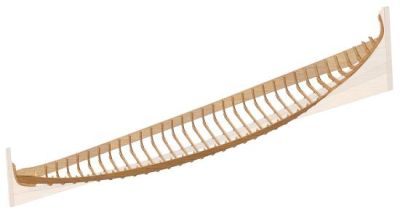
“Also, the person didn’t drive the crowbar into the center of the space between two ribs. He rammed it through the hull right next to one of the ribs, which is the weakest point.”
Who would have had means, motive and opportunity? Well, lots of people, I suppose, but one sort of person was qualified to know exactly where to strike, like a particularly adroit matador, and that would be another gondolier.
So our man got his gondola repaired and went on with his life, which entailed carrying tourists around in his gondola and annoying everybody.
“His son also became a gondolier,” Lino concluded. “He was a good kid, much calmer. Nothing like his father.”
And so the man retired, and now can be seen sitting at our cafe, at least once in a while, eating his snack all by himself. Perhaps reminiscing, as old men do, but his reminiscences must be like constantly rising vapor, the sort you see coming from fumaroles on a temporarily dormant volcano.
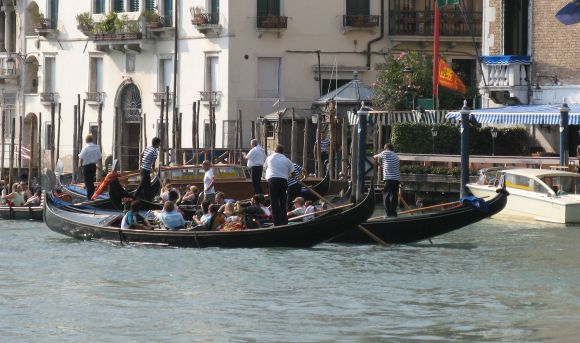
We headed back home, and were strolling along the Calle de le Acque. We paused in front of an imposing building which now houses a branch of the post office (make note, if you ever need one between the Rialto and the Piazza San Marco).
“That’s where the bomb blew up,” Lino said. Excuse me?
“It was back in the Seventies; the headquarters of the Gazzettino were in this building,” he said. “It was printed here, too — the building’s right next to the canal, where the boats could load up the newspapers.”
The late Sixties to early Eighties, a period now known as the “Anni di Piombo” (Years of Lead, as in bullets), saw many terrorist attacks by domestic extremist groups, and I won’t begin a list here; I only mention it to clarify that this bomb was not an isolated incident.
“One morning (Feb. 21, 1978 — 37 years ago today!) there was a big explosion here, and a security guard was killed.”
His name was Franco Battagliarin, he was 49 years old and came from Cavallino Treporti on the edge of the lagoon. He was passing early that morning, and noticed an object placed in front of the main door. It was later found to have been a pressure cooker, which in those years was a favorite container for homemade bombs because it gave a sort of turbo-charge to the detonation.
Battagliarin went closer, decided to pick it up to move it, and was killed instantly by the blast.
The extreme right-wing group that called itself “Ordine Nuovo” (New Order) telephoned the Padova office of the newspaper a few hours later, claiming to have placed the bomb as “revenge for dead comrades.” The paper had offended by publishing articles critical of the right wing. Battagliarin was just an unforeseen by-victim.
Venice declared a day of mourning and flew the gonfalone of San Marco at half-staff for several days; his name is remembered each year on “Memory Day,” which is dedicated to all the victims of terrorism.
Back to Lino, who was at work that day at the airport, as usual.
“That day, the union steward came to us, furious, saying we would strike for a day to protest this attack directed at a ‘democratic newspaper.’
“And I was asking myself, ‘But wait — up until yesterday, you were always telling us that the Gazzettino was the newspaper of the bosses'” — in simpler words, the oppressor class. “And today suddenly it’s a democratic paper?
“Anyway, at the meeting I said, ‘Instead of going on strike, we should all give our pay for one day to the family.'”
Sound good? Only to him. A chorus of “Are you insane?” followed. So they went on strike one day, and he just kept on working. Later a long line of co-workers came slinking up to him, each of them muttering “I’d have kept working too, but I didn’t have the courage,” to which Lino replied, “Numbskull.”
I think that’s enough stories for today. I need to rest.
